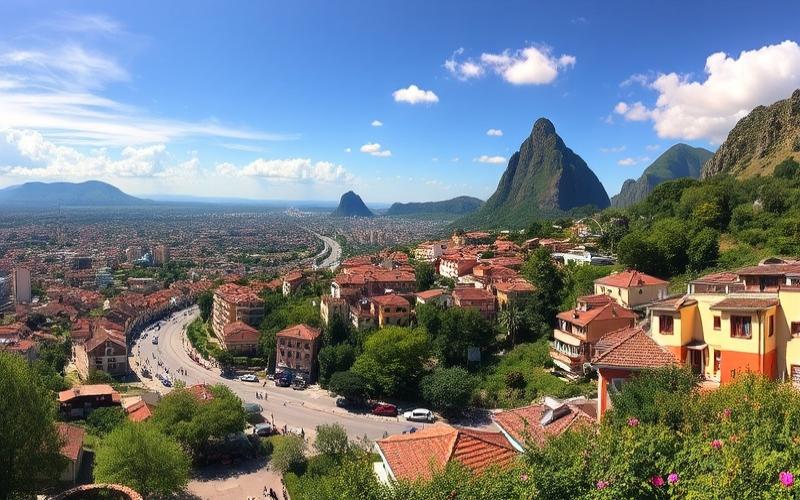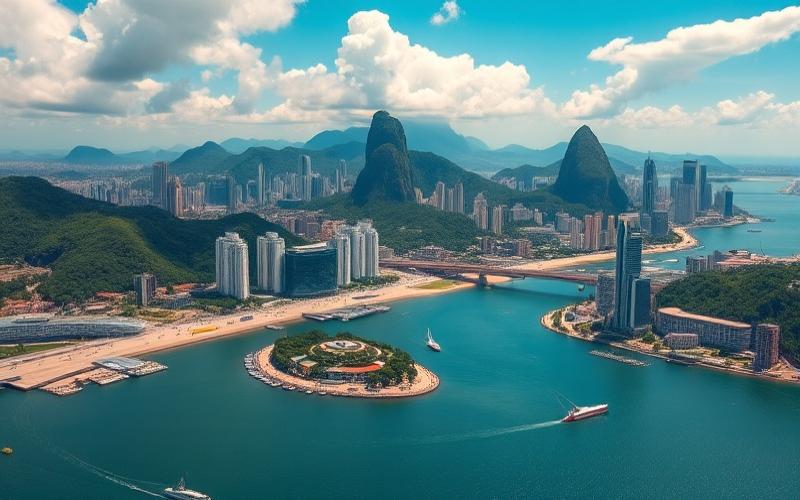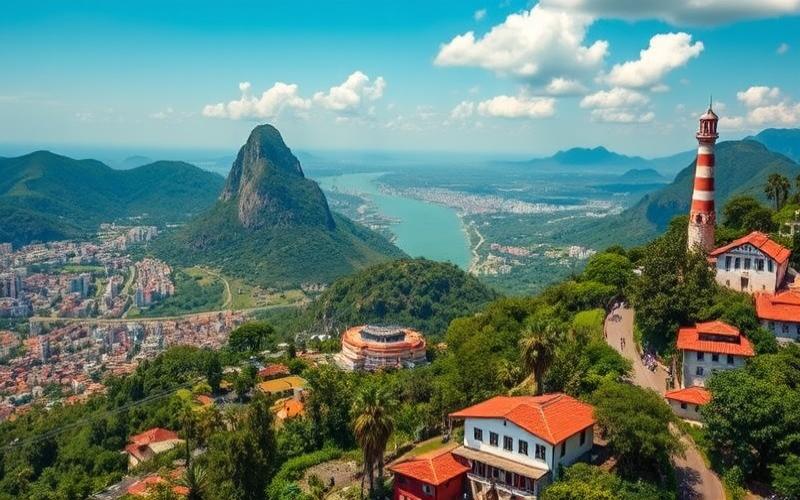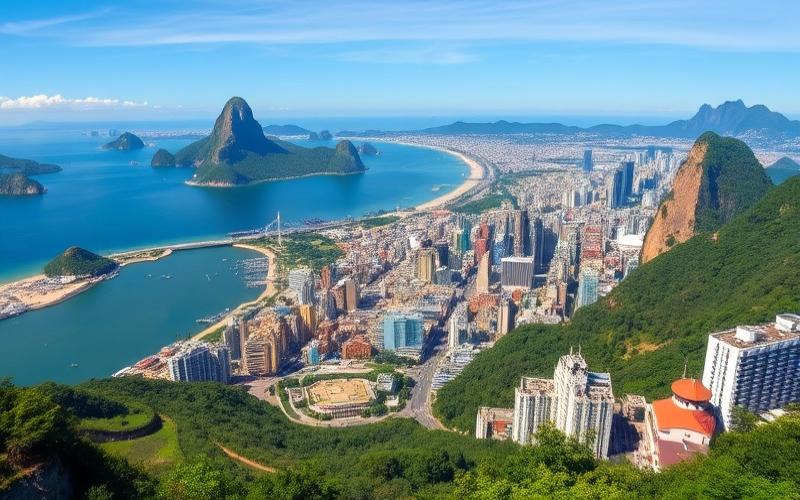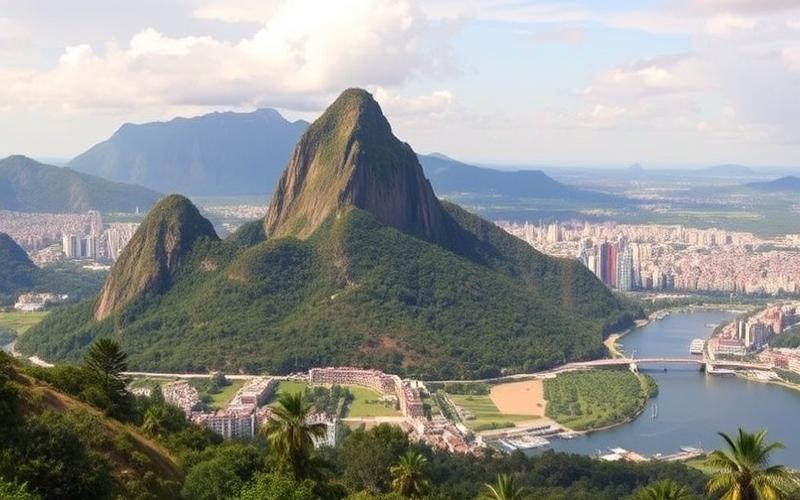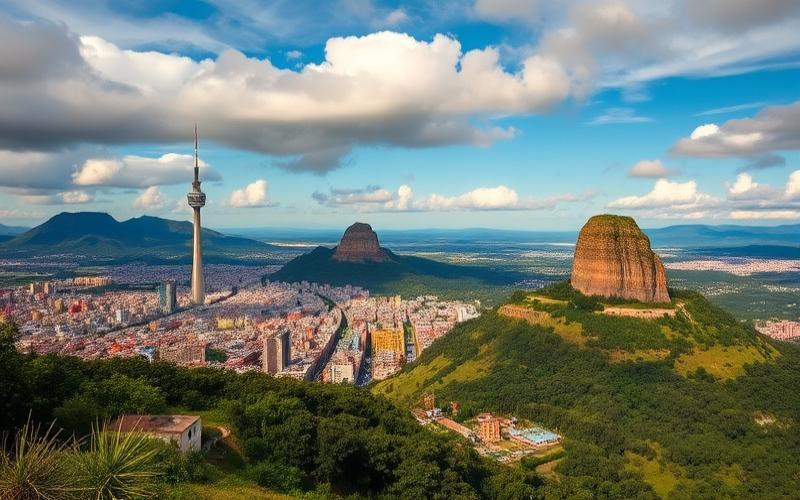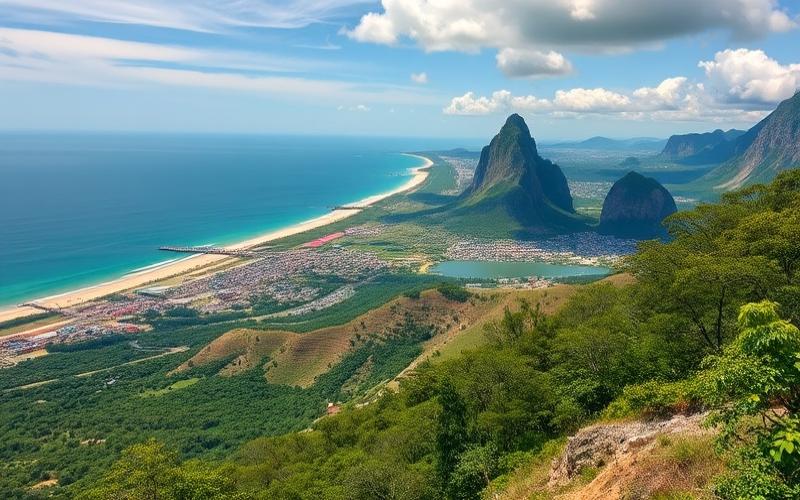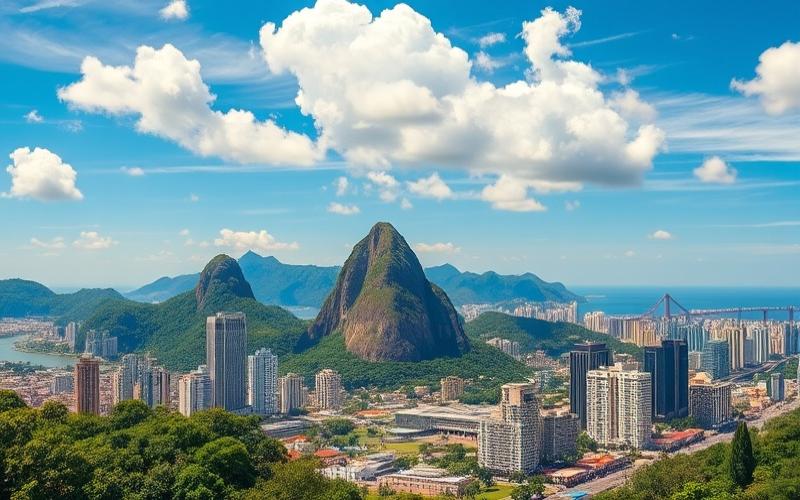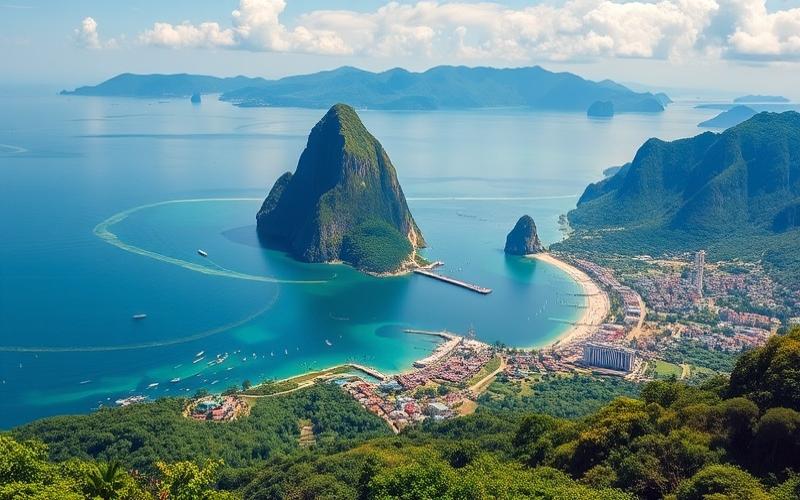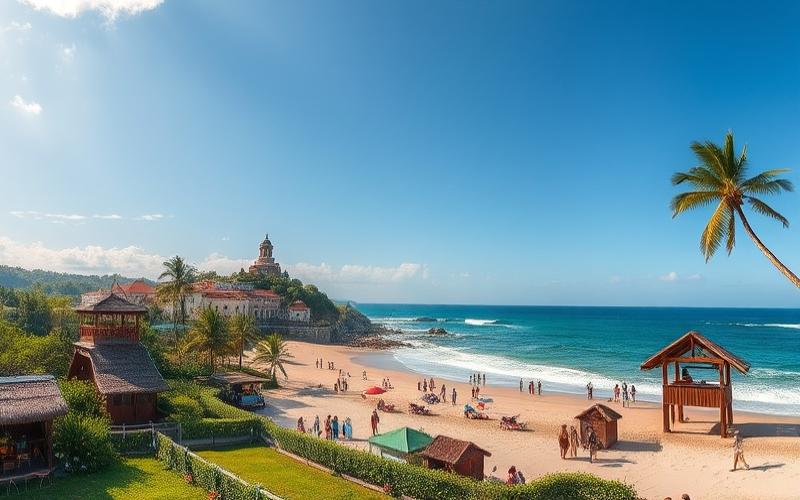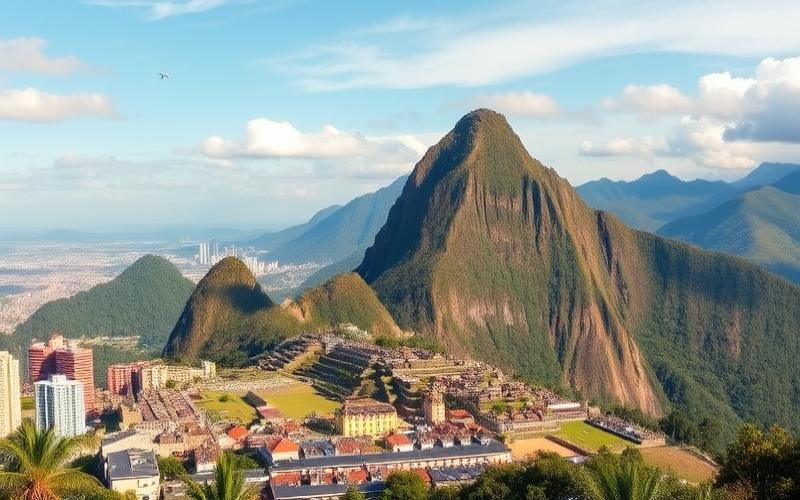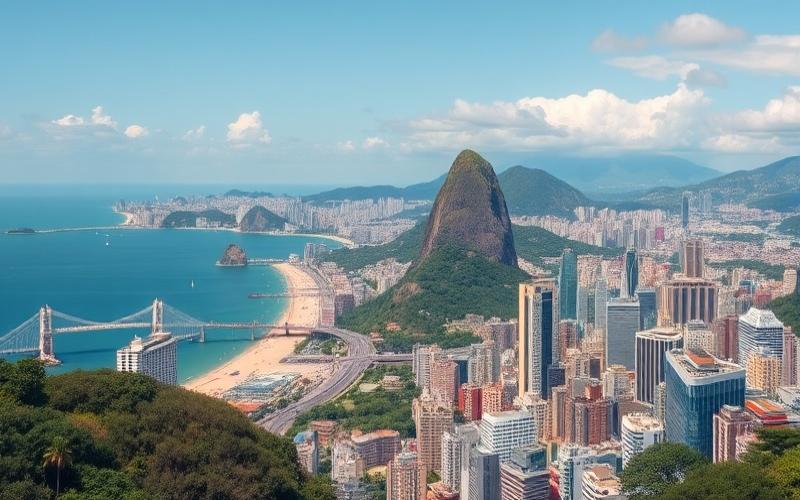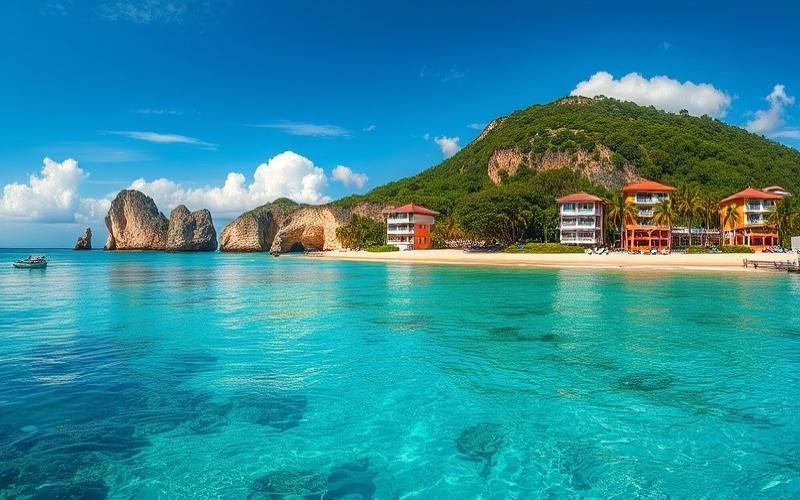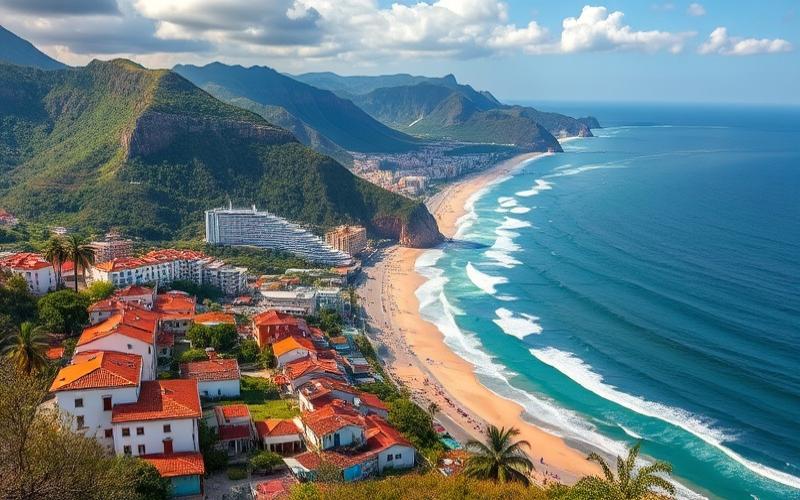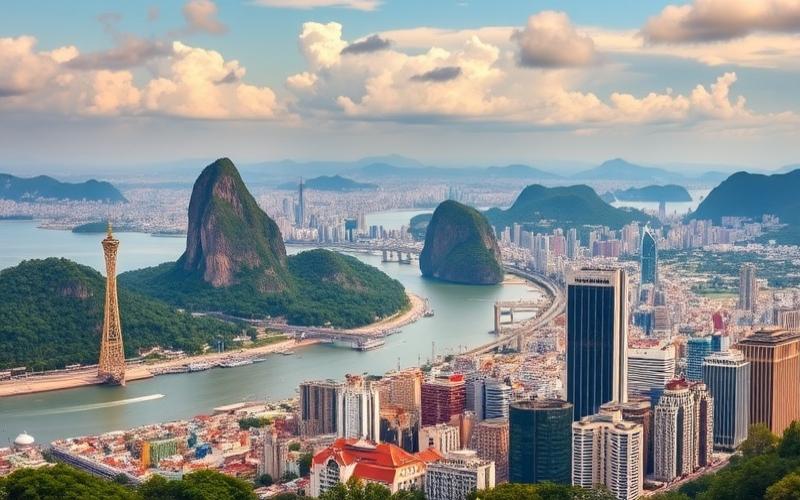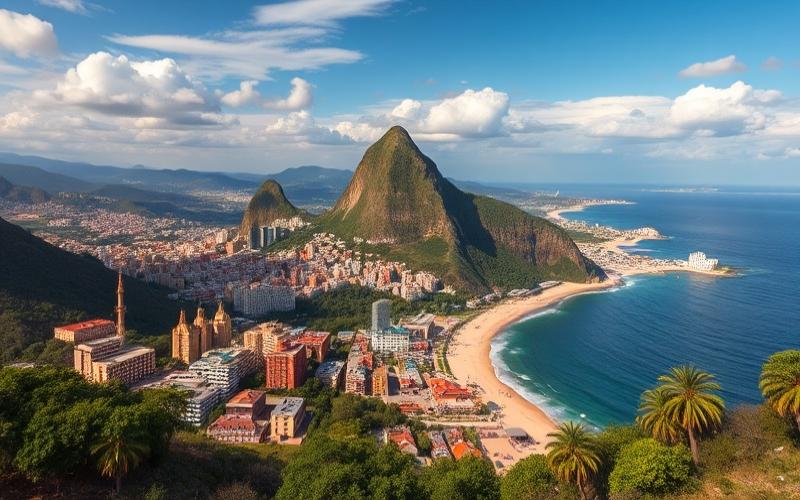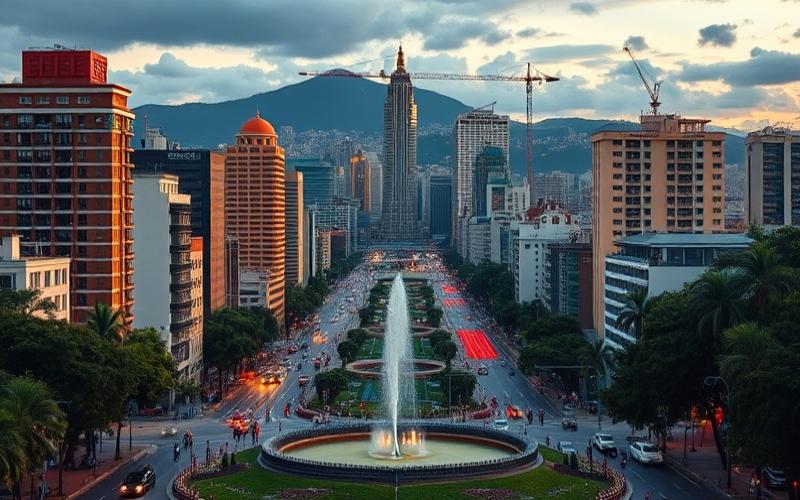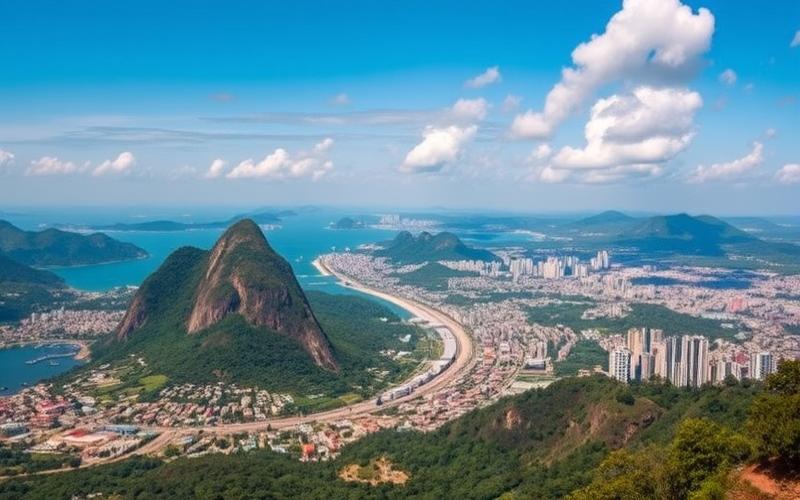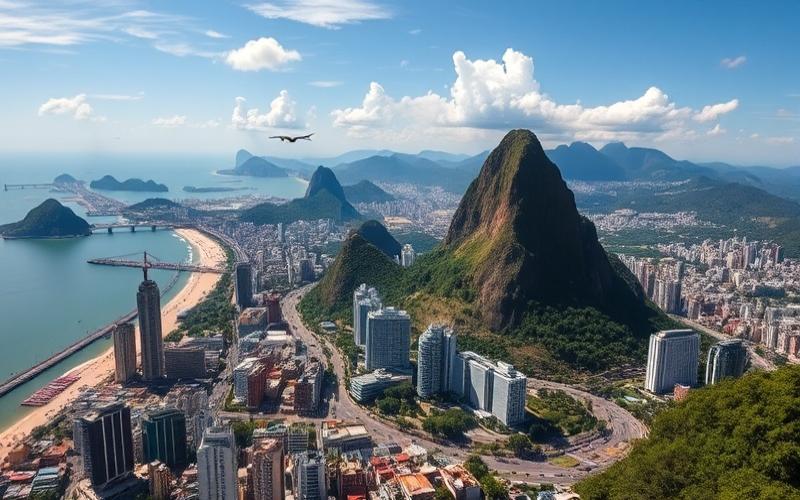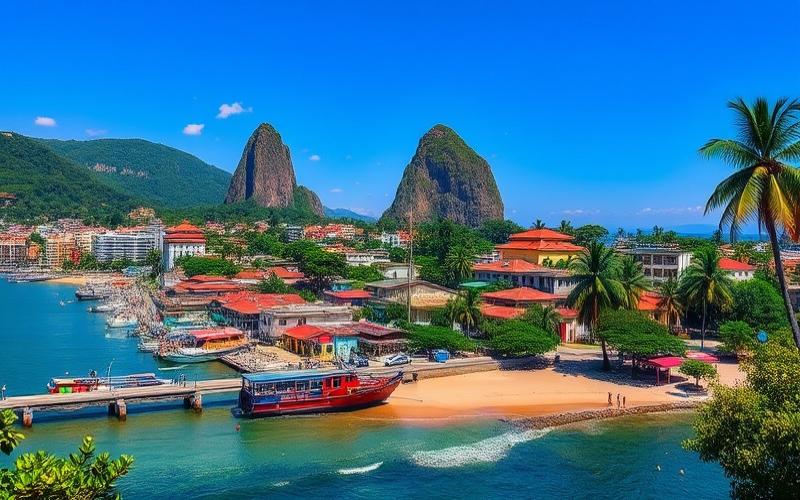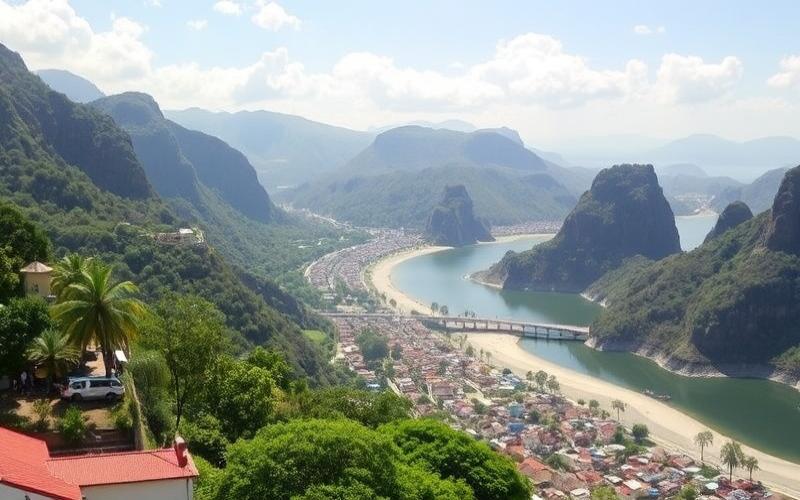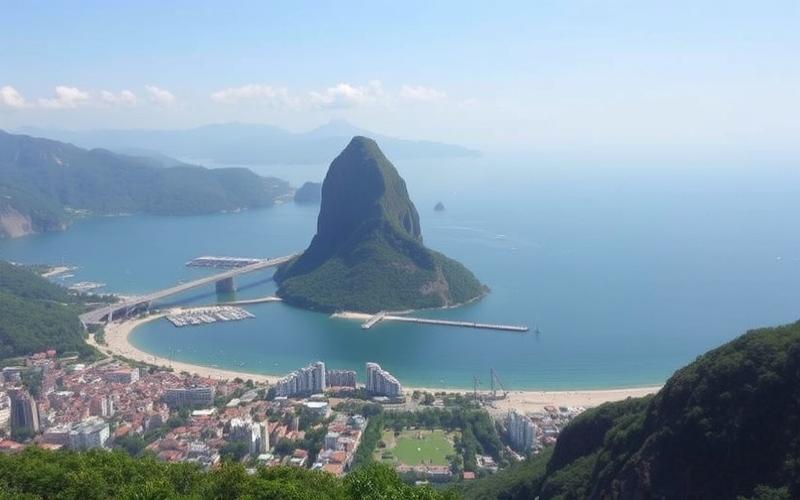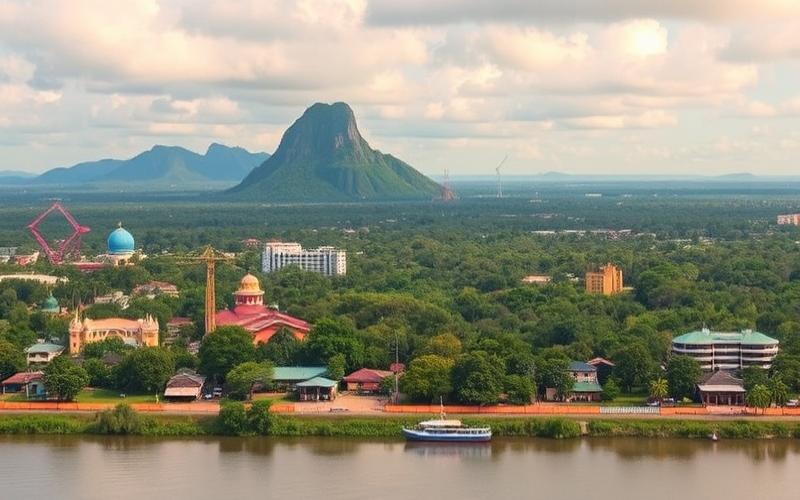
 Published on and written by Cyril Jarnias
Published on and written by Cyril Jarnias
The Rise of Industrial Real Estate in Brazil
Brazil is opening unprecedented opportunities for investors seeking new prospects in this rapidly expanding sector. The country, bolstered by its strategic geographic location and abundant workforce, is becoming a focal point for international companies looking to establish operations in Latin America.
Free Trade Zones: A Major Asset
Among the numerous available options, free trade zones stand out due to their attractive tax benefits and top-tier logistical infrastructure. By exploring these zones, one can discover key regions that promise to transform the economic landscape, both for domestic commerce and exports.
Good to Know:
This momentum is driven by government policies favoring foreign investment, which could position Brazil as a key player on the global industrial real estate stage.
Introduction to Industrial Real Estate Opportunities in Brazil
Brazil demonstrates resilient economic growth that supports demand for industrial assets: GDP grew by 2.9% year-over-year in Q1 2025, with a quarterly acceleration of 1.4% driven by fixed investment (+3.1%), despite restrictive monetary policy. However, high capital costs weigh on the future pace of expansion, with high benchmark interest rates curbing activity, even though authorities still target growth around 2.5% in 2025.
Key Sector Drivers:
- Rebound in agriculture (+10.2% y/y Q1 2025) supporting agri-export logistics and cold storage warehouses.
- Industry in moderate growth (+2.4% y/y), consolidating demand for production space and industrial parks.
- Dynamic fixed investment, a leading indicator for factory construction, logistics hubs, and equipment.
Legislation and the investment climate generally remain favorable to foreign capital in industrial real estate, with openness to FDI and market depth that has enabled sustained investment cycles; however, the stricter monetary environment requires prudent financial structuring and attention to debt costs.
Implications for Investors:
- Window for value-add/core-plus strategies on well-located assets, given positive real growth and higher capital costs requiring robust operational returns.
- Importance of indexed leases and interest rate risk management.
Brazil’s topography and infrastructure favor the development of large-scale industrial and logistics parks:
- Vast territory connecting industrial hubs (Southeast, South) to agribusiness corridors (Center-West), supported by road networks and gradually improving export corridors, which stimulates demand for platforms near metropolitan ring roads and port/airport terminals.
- Physical investment cycles correlated with gross fixed capital formation translate into construction and modernization pipelines for industrial assets.
Examples of Successful Companies that Invested in Brazilian Industrial Real Estate:
Logistics and industrial deployments aligned with consumption and export expansion, with sustained performance in key markets like São Paulo and regional capitals, illustrating tenant resilience and end-user depth.
Structural Strengths that Favor the Establishment of New Industries:
- Size of the domestic market and robust agro-mining base, creating needs for warehouses, cross-docks, and processing plants near consumption basins and ports.
- Opportunities in free trade zones and regional incentive schemes, useful for optimizing setup costs, capturing export value chains, and attracting value-added assembly/logistics operations, especially when external demand holds but domestic capital costs demand operational efficiency.
Future Market Outlook:
- Sustained but more selective growth: demand for modern assets (Class A/A+, ESG-ready, near port/rail/hub) is expected to outperform, while obsolete assets will face increased rental polarization.
- The 2025-2026 cycle will depend on interest rate trends and foreign trade dynamics; maintaining growth around 2–3% with resilient fixed investment would support industrial construction starts and vacancy compression in the best submarkets.
Table — Key Points for Industrial Real Estate in Brazil
| Theme | Key Takeaway | Implications |
|---|---|---|
| GDP Growth | +2.9% y/y Q1 2025; +1.4% q/q with fixed investment +3.1% | Supports demand for factories and warehouses |
| Cost of Capital | High rates, tight financial conditions | Rigorous selection, focus on cash flows and indexing |
| Sector Demand | Agri, industry, domestic logistics | Need for cold storage assets, regional hubs |
| Location | Proximity to ring roads, ports, airports | Rental premium for well-located Class A/A+ |
| Incentive Schemes | Free trade zones and regional incentives | Reduced setup and export costs |
Segments and Geographies to Watch:
- Logistics corridors of São Paulo and regional capitals with selective stabilization/appreciation in real estate values.
- Well-connected secondary markets offering attractive yields and moderate but steady rental growth.
- Specialized assets (cold storage, e-commerce, light manufacturing) to capture agri and urban consumption growth.
The combination of positive real growth + dynamic fixed investment, despite high capital costs, continues to create entry windows into Brazilian industrial real estate for operators capable of aligning location, asset quality, and public incentives.
Good to Know:
Brazil, with its sustained economic growth, offers fertile ground for industrial real estate, particularly due to incentive legislation for foreign investors. The country’s well-developed infrastructure and varied topography facilitate the deployment of industrial parks, especially in strategic free trade zones. Companies like BMW and Foxconn have already capitalized on these strengths by investing in the territory, benefiting from low operating costs and optimized logistics. The outlook is promising, as the Brazilian market continues to attract new players, supported by industrial growth and increased availability of free trade zones that encourage the establishment of new industries, generating unparalleled growth opportunities for savvy investors.
Strategic Free Trade Zones for Logistics Warehouses
Brazil’s most strategic free trade zones for logistics warehouses are concentrated around major port and airport hubs, particularly around the Port of Santos and the Southeast-South corridors, where export growth, multimodal connectivity, and tax incentives create measurable efficiency gains for national and international distribution.
Decisive Geographical Positioning
- The Port of Santos, South America’s leading port complex, handles about 30% of the country’s exports and supplies the industrial Southeast markets (São Paulo, Campinas), making it a natural anchor for logistics free trade zones and bonded warehouses dedicated to containerized flows.
- A 20% increase in container traffic in 2024 underscores the centrality of zones adjacent to Santos for absorbing demand, reducing break-bulk, and bringing inventory closer to high-frequency maritime terminals.
- Corridors connected to airport hubs (e.g., Viracopos-Campinas) strengthen the air-sea network for warehouses under suspension regimes, optimizing lead times for high-value parts and cross-border e-commerce.
Transport Infrastructure and Multimodal Access
- Santos terminals operate at high throughput (e.g., BTP) with container yard capacity, heavy handling equipment, and road/rail connections to the industrial hinterland, reducing transit times and pre/post-carriage costs for free trade zone warehouses.
- Public-private investments announced through 2025 (approximately BRL 205 billion/year) and road concessions support the improvement of bottlenecks, a key factor for the performance of logistics free trade zones near BR highways and port nodes.
Relevant Tax and Customs Benefits for Warehouses
- Suspension of import duties and taxes on goods in storage/limited processing, re-export without taxation, and deferred payment upon entry into the domestic market: standard free trade zone mechanisms that improve cash flow and inventory turnover.
- Reduced formalities and dedicated channels speeding up customs clearance operations, useful for consolidation/deconsolidation warehouses and delayed differentiation operations (kitting, labeling).
Notable Examples of Free Trade Zones/Areas and Adjacent Platforms that Have Attracted Logistics Investments
Santos and Hinterland (Baixada Santista – São Paulo Corridor)
- Why: proximity to the country’s largest port, road/rail access, critical mass of carriers and 3PLs; sharply rising traffic in 2024, encouraging the establishment of bonded warehouses and cross-docking near terminals.
- Impact: “port-centric logistics” location reducing export/import lead times and buffer storage costs in the face of congestion.
Viracopos–Campinas (Expanded Airport Logistics Zone)
- Why: major air cargo hub connected to the São Paulo industrial pole; benefits from national logistics growth and infrastructure plans supporting corridors.
- Impact: warehouses under suspension regimes for fast-moving parts, accelerating B2B/B2C distribution in the Southeast.
Southern Hubs (Paraná–Santa Catarina–Rio Grande do Sul)
- Why: integration with export agribusiness and manufacturing chains, supported by concessions and road investments improving regional port access.
- Impact: logistics platforms under special regimes serving as seasonal buffers for exports, reducing off-port storage costs and demurrage penalties.
Tangible Benefits for Companies Establishing Warehouses in These Zones
Cost Reductions
- Deferred/suspended duties and VAT on imported inventory; working capital optimization through payment upon withdrawal for the domestic market or exemption in case of re-export.
- Reduced pre/post-carriage costs and congestion-related fees through immediate proximity to terminals and access to priority logistics slots.
Accelerated Flows
- Simplified customs clearance and in-zone customs processing, enabling shorter lead times between ship/plane arrival and stock availability for distribution, critical in a context of rapidly growing volumes.
- Better OTIF (on-time in-full) reliability on corridors benefiting from infrastructure investments and concessions, with projections of sustained logistics growth through 2029.
Operational Flexibility
- Possibility of light repackaging, labeling, delayed differentiation, and consolidation in-zone, limiting upstream costs and adjusting supply to local/regional demand.
Statistics and Market Dynamics Supporting Impact on the Supply Chain
- +20% container traffic in 2024 along the Brazilian coast, putting pressure on ports and reinforcing the role of adjacent zone warehouses to absorb peaks and streamline shipments.
- Brazilian freight and logistics market estimated at USD 104.79 billion in 2024, with expected growth to USD 129.34 billion by 2029 (CAGR 4.30%), supporting the expansion of storage capacity under special regimes.
- Approximately BRL 205 billion/year in public infrastructure investments through 2025 and BRL 100 billion in private road contracts over four years: levers for improving connectivity for logistics free trade zones.
Table — Strategic Zones and Attractiveness Levers
| Strategic Zone | Geographic Asset | Key Infrastructure | Tax/Customs Benefits Useful for Warehouses | Expected Effect on Supply Chain |
|---|---|---|---|---|
| Santos + Hinterland (SP) | Proximity to leading port, 30% of exports | High-throughput container terminals, road/rail access | Suspension/deferral of duties, in-zone customs clearance | Reduced lead time, less congestion, lower unit logistics costs |
| Viracopos–Campinas | Air cargo node near SP industry | Airport platforms, road connectivity | Suspension regimes, accelerated processing | Speed for critical parts/e-commerce, better stock availability |
| Southern Corridors (PR–SC–RS) | Proximity to agri/manufacturing exports | Road concessions, access to southern ports | Special regimes for export consolidation | Reduced demurrage, seasonal buffers, increased OTIF reliability |
Best Practices for Establishing Warehouses in Brazilian Free Trade Zones
- Prioritize “port-centric” or “airport-adjacent” sites connected to high-throughput terminals to capture significant time savings during peak loads.
- Leverage suspension regimes to smooth cash flow and reduce the total cost of ownership for imported inventory, especially for medium-turnover items.
- Align with corridors benefiting from short-term public-private investments to secure stable SLAs and predictable transport costs.
Good to Know:
In Brazil, free trade zones like the Zona Franca de Manaus and the state of Santa Catarina are essential logistics hubs, thanks to their strategic geographic position and robust transport infrastructure. The Zona Franca de Manaus, for example, attracts logistics investments due to its tax benefits, such as exemptions from certain import and export taxes, which favor operational cost reductions for companies. Santa Catarina stands out for its well-developed ports and roads, facilitating faster distribution of goods. These zones have demonstrated a significant impact on the Brazilian supply chain, with recent studies showing a 30% reduction in distribution time for established companies. For businesses, setting up in these free trade zones means not only substantial savings but also an increased competitive advantage in the market through enhanced logistics efficiency.
Yield and Attractiveness of Investments in the Industrial Sector
Industrial real estate investments in Brazil offer average gross yields around 7–12%, with peaks potentially reaching 15% depending on the asset and location. In a context of high benchmark interest rates (SELIC ~15%), the risk-return trade-off requires fine selection of regions and free trade zones, where incentives improve net yield.
- Observed gross yields on commercial real estate (including warehouses and logistics parks) generally range between 7–12%, higher in emerging markets and on the logistics periphery, with specific opportunities up to 15%.
- The level of the Brazilian benchmark rate, recently around 15%, increases the cost of capital and selects the most productive projects, while supporting carry strategies and weighing on private investment.
- Regional dispersion is marked: Southeast metropolitan areas (São Paulo, Rio) offer more compressed but more stable yields due to leasing depth, while regions benefiting from incentives and logistics corridors (North/Northeast, free trade zones) can show higher yields to compensate for perceived risk.
- National real estate price dynamics show a long-term upward trend, but they mainly reflect residential; the industrial segment’s yield premium remains conditioned on indexed rents and local vacancy.
Key Attractiveness Factors
- Incentives and Taxation
- Incentive policies in free trade zones (exemptions/reductions in indirect and local taxes) improving net yield for industrial and logistics operators.
- Local property tax (IPTU) generally moderate, with municipal rates often between 0.3% and 1.5% of cadastral value, favorable for long-term holding.
- Macrofinancial Environment
- High real rates in 2025, reflecting restrictive monetary policy: this supports well-indexed recurring income strategies and disciplines the selection of core+ and value-add assets.
- Infrastructure and Logistics
- Deployment of modern logistics assets near major road axes, ports, and airports, with demand sustained by e-commerce and supply chain reorganization; locations benefiting from improved infrastructure and incentives capture more resilient rents.
- Risk/Reward Premium
- More volatile cycles and regional disparity create entry points offering a yield premium compared to mature markets, particularly in zones with incentives.
Case Studies and Recent Data: Free Trade Zones and Incentive Regions
- Free Trade Zones/Free Trade Areas
- Brazilian free trade zones offer incentive regimes that translate into preferential setup conditions for production and logistics, improving net rental yield through lower operational tax burdens.
- Recent transactions mention above-average yields in zones benefiting from local exemptions, reflecting a controlled risk premium through long-term leases and anchored industrial tenants.
- 12–24 Month Outlook
- As long as rates remain high, industrial assets with indexed leases and low vacancy should maintain a net yield premium; an anticipated monetary easing cycle in the medium term could favor cap rate compression and revaluation of well-located assets.
Sector Comparison: Industrial vs Other Sectors
- Yield and Stability
- Industrial/logistics shows competitive gross yields (7–12%+) compared to other segments, with better rent resilience where warehousing and distribution demand is deep; core markets (São Paulo) show less vacancy but more compressed yields.
- Residential shows positive national price dynamics, but with yields generally lower than industrial; residential leasing liquidity is more fragmented and more sensitive to credit cycles.
- Relative Risks
- Higher macro exposure in Brazil (rates, inflation, FX), counterbalanced by local incentives and the contracting of indexed industrial leases; globally, restrictive monetary policy increases the cost of capital, favoring assets generating secure cash flow.
Summary Comparative Table
| Segment | Typical Gross Yield | Leasing Stability | Rate Sensitivity | Improvement Levers |
|---|---|---|---|---|
| Industrial/Logistics | 7–12% (up to 15% opportunistic) | Medium to High (long leases) | High on valuation, lower on indexed cash flow | Free trade zone incentives, optimization capex, location |
| Office | 8–11% variable by vacancy | Variable (cyclical vacancy) | High | Repositioning, multi-tenancy |
| Retail (shopping centers) | 8–12% with dispersion | Depends on consumption | High | Tenant mix renewal, revenue sharing |
| Residential | 4–8% by city | High in demand, more volatile rents | Medium via credit | Furnished, coliving, indexing |
Investor Checklist
- Verify the incentive regime applicable to the zone (exemptions from ISS, ICMS, IPI, IPTU) and their residual duration.
- Model net yield after local taxation (IPTU 0.3–1.5%), financing cost at SELIC, and cap rate scenarios.
- Prefer long indexed leases, with quality industrial tenants and step-up clauses.
- Assess logistics depth: road/port/airport access, labor and service availability.
- Diversify by regions to capture premiums offered by certain free trade zones while controlling vacancy.
Info Box
| Target Net Yield (Indicative) | Core São Paulo | Core+ Regional | Free Trade Zone/Incentives |
|---|---|---|---|
| Risk Premium | Low | Medium | Medium to High |
| Target Net Yield | 7–9% | 9–11% | 10–13%+ |
| Key Conditions | Low vacancy rate, indexing | Light repositioning | Tax incentives, long leases |
The 2025 macro framework, with high benchmark rates and real rates at a 20-year peak, favors an income-oriented approach to industrial/logistics, targeting regions and free trade zones where incentives significantly improve net performance.
Municipal tax benefits and incentive regimes strengthen the relative attractiveness of industrial compared to other segments, especially when modern logistics is backed by quality infrastructure.
Good to Know:
In Brazil, investments in industrial real estate offer an attractive average yield, around 9% in some regions like the free trade zones of Manaus or the state of Espírito Santo, where advantageous fiscal policies and government incentives enhance their attractiveness. The availability of quality logistics infrastructure, complemented by specific tax exemptions, favors these investments, especially in an uncertain global context. For example, logistics and technology companies have recently recorded significant growth after establishing operations in these zones, highlighting the potential of these regions. Although the industrial sector shows greater stability than other sectors like retail, it is not exempt from risks related to global economic fluctuations. Compared to commercial or residential real estate, investing in the industrial sector in Brazil, particularly in free trade zones, allows for portfolio diversification while limiting risks thanks to well-established state support policies.
Disclaimer: The information provided on this website is for informational purposes only and does not constitute financial, legal, or professional advice. We encourage you to consult qualified experts before making any investment, real estate, or expatriation decisions. Although we strive to maintain up-to-date and accurate information, we do not guarantee the completeness, accuracy, or timeliness of the proposed content. As investment and expatriation involve risks, we disclaim any liability for potential losses or damages arising from the use of this site. Your use of this site confirms your acceptance of these terms and your understanding of the associated risks.


